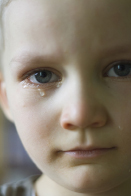Session 1
1. Session 1
1.3. Page 2
Session 1: Social-Emotional Development
Checking My Understanding: Supporting Social-Emotional Development in the Child Care Facility
Focus
Child care providers play an essential role in providing an environment that is both physically and emotionally safe for children. When child care providers understand how children develop socially and emotionally, they can create successful play experiences and interactions that support children’s self-esteem.
Directions
Important: Some situations may have more than one matching practice.
Complete this “21-Recommendation Check.” Read the 21 recommended practices listed in the activity. For each situation, indicate which practices the child care provider is performing.
Developmental Achievements from Birth to Five Years
It’s important to remember that each child is unique and develops at his or her own rate. As you review the stages of social and emotional development, consider what the implications are for child care providers. For example, if a baby begins to fear strangers at about six months of age, how can this information be used at the child care centre?
The tables Social Development and Emotional Development provide details on what a child can typically do and skills that are typcially emerging at each stage of development.
Temperament and Self-Esteem

© Marzanna Syncerz/451284/Fotolia
Children have individual characteristics or temperaments. The following examples provide a few ranges:
- Some children adjust quickly to new situations; others need much more time to adjust.
- Some children tend to be very active most of the time, while others are quite inactive.
- Some children get easily distracted; others seem to concentrate for a long time on one activity.
Most researchers agree that some traits, such as those listed above, are at least in part influenced by genetics. While responsive child care providers can help children adapt, they cannot change children’s basic temperaments.
To help children develop positive self-esteem, it is important that child care providers encourage children’s growth and that they accept children for who they are. For example, never suggest or imply that shyness is not a good characteristic or temperament; rather, encourage a child who is shy by noting when the child is being social and by giving the child strategies for becoming less shy.
Course Completion Checklist
Have you remembered to update your Course Completion Checklist? If you haven’t already started to use the Checklist, access it in the Toolkit now. Remember to update the Checklist every time you work on the course.
 Course Project
Course Project
Don’t forget to apply what you have learned to working on your Course Project.